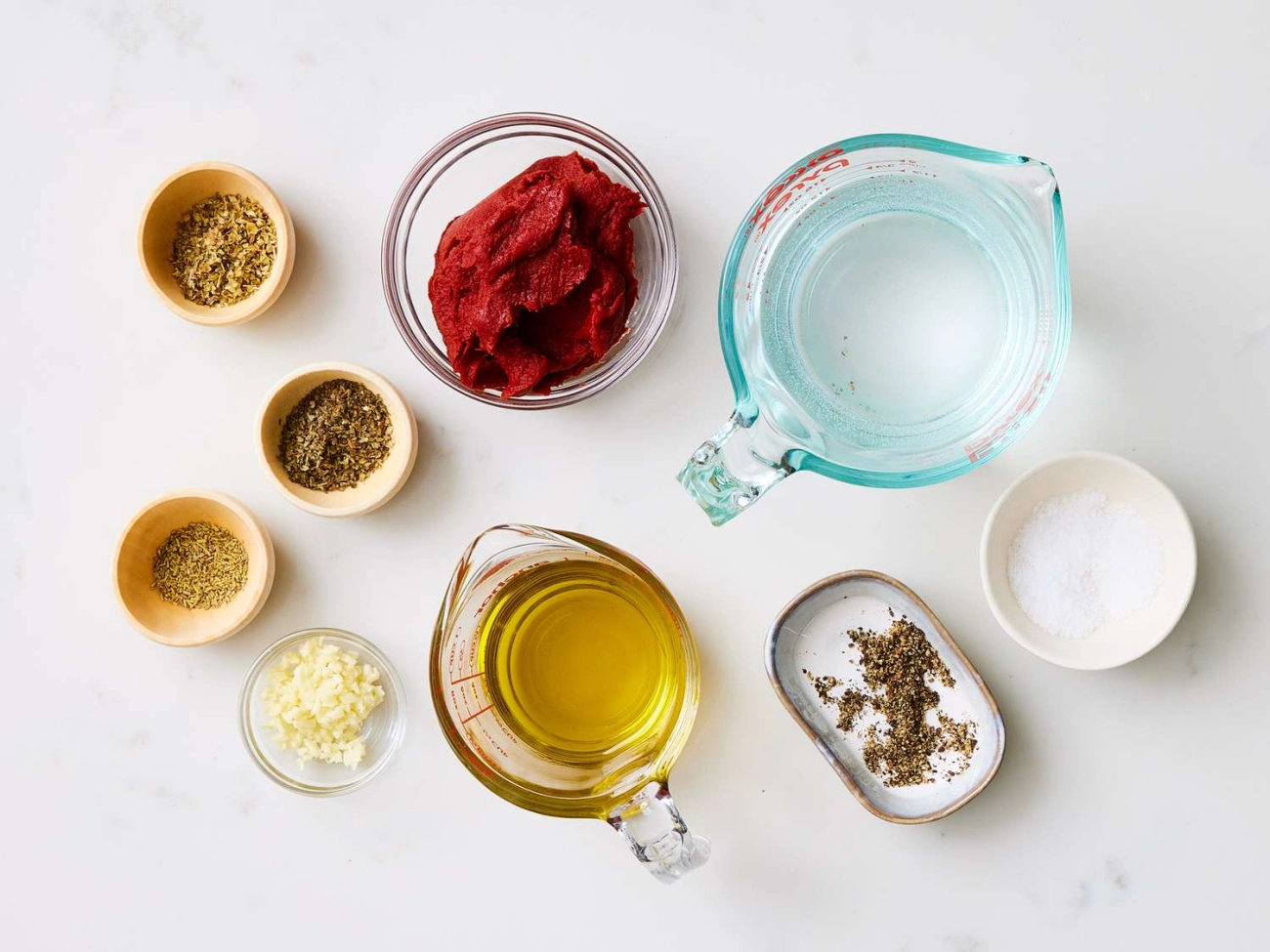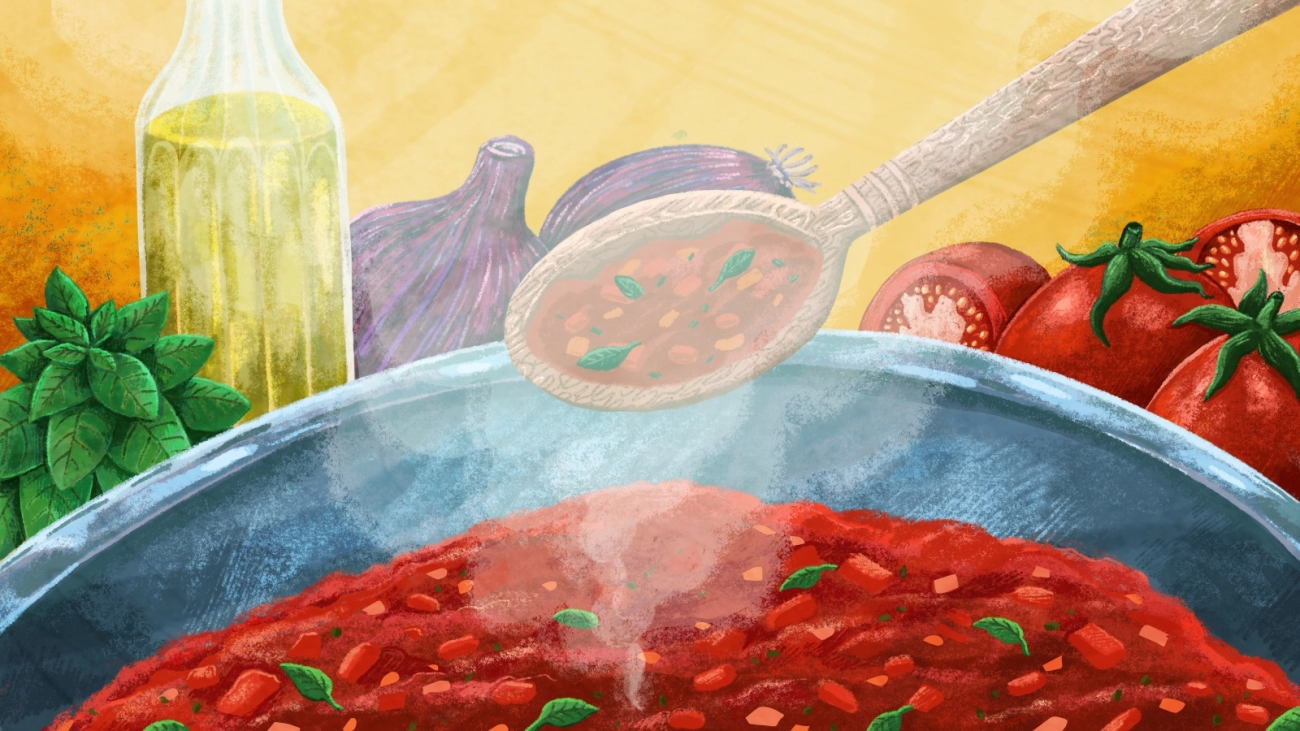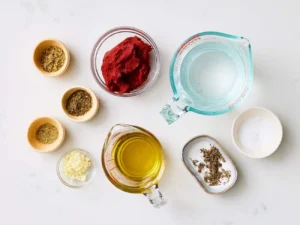Are you looking for an easy way to whip up pizza sauce with tomato paste that tastes fresh, flavorful, and beats anything from a store-bought jar? You’re in the right place. Using tomato paste as the base is a game-changer—it’s super convenient, packed with rich tomato flavor, and perfect for creating that thick, delicious sauce every pizza needs.
In this guide, you’ll discover exactly how to make pizza sauce with tomato paste step-by-step, including the essential ingredients, flavor tips, and tweaks to get your sauce just right. Whether you’re a beginner or a seasoned home cook, this recipe will help you elevate your homemade pizza game in no time. Let’s get saucy!
Why Use Tomato Paste for Pizza Sauce
Tomato paste is a superstar ingredient when it comes to making pizza sauce. Its concentrated flavor packs a rich, deep tomato taste that fresh or canned tomatoes often can’t match. Because it’s cooked down to remove excess water, tomato paste naturally has a thick, smooth consistency that clings perfectly to pizza dough without making it soggy.
Beyond flavor and texture, tomato paste offers great convenience. It’s shelf-stable and comes in easy-to-use cans or tubes, meaning you can keep it on hand for whenever pizza night strikes. Unlike fresh tomatoes, which require peeling and cooking down, or canned tomatoes which might add extra liquid, tomato paste cuts prep time and gives you consistent results every time.
Compared to fresh tomatoes, tomato paste is much easier to store and use year-round. It provides a more robust tomato flavor than canned tomatoes, which can sometimes taste watery or bland for sauce. This makes tomato paste a reliable base for a homemade pizza sauce recipe that’s both flavorful and simple to whip up.
Essential Ingredients for Perfect Tomato Paste Pizza Sauce

To make a great pizza sauce using tomato paste, you’ll need a handful of core ingredients that work together to build flavor and the right texture. Here’s what you’ll want:
- Tomato paste: The base—provides thick, rich tomato flavor. Look for double concentrated or aseptic tomato paste for the best taste and consistency.
- Olive oil: Adds smoothness and richness, helps meld flavors.
- Garlic: Fresh or powdered gives that classic punch of flavor.
- Herbs: Dried or fresh oregano and basil are must-haves for that signature pizza taste.
- Spices: Black pepper and red pepper flakes add a little heat and depth.
- Water: Used to loosen the paste to sauce consistency without watering down flavor.
- Sugar: Balances the acidity of the tomato paste.
- Salt: Enhances all the flavors in the sauce.
Each ingredient plays an important role—tomato paste gives concentration, olive oil smooths it out, garlic and herbs bring that traditional pizza vibe, and sugar pulls the sharpness into balance.
Tips for Choosing Ingredients
- Pick high-quality tomato paste without added sugars or preservatives for a clean, authentic taste.
- Choose fresh herbs if possible; they brighten the sauce more than dried ones.
- If you use dried herbs, crush them lightly to release more aroma.
- Use extra virgin olive oil for the best flavor impact.
Keeping these ingredients fresh and quality-focused makes all the difference in a simple pizza sauce recipe made from tomato paste.
Step-by-Step Recipe How to Make Pizza Sauce with Tomato Paste
Preparation and Equipment Needed
Before you start, gather these simple tools: a medium saucepan, a wooden spoon or spatula, measuring spoons, and a small bowl for mixing. Have your tomato paste and other ingredients ready to make the process smooth and fast.
Detailed Step-by-Step Instructions
- Heat Olive Oil – Warm 2 tablespoons of olive oil in your saucepan over medium heat for about 1 minute. This helps bring out flavor and prevents the garlic from burning.
- Add Garlic and Herbs – Stir in 2 minced garlic cloves and 1 teaspoon of dried herbs like oregano or basil. Cook for 30 seconds until fragrant.
- Mix Tomato Paste – Add one 6-ounce can or 1 small tube of tomato paste. Stir well to coat it in the oil and garlic. Let it cook, stirring often, for 2-3 minutes. This deepens the sauce’s flavor.
- Add Water – Slowly mix in 1 cup of water to loosen the paste. Stir until smooth.
- Season – Add 1 teaspoon sugar, 1 teaspoon salt, and pepper to taste. These balance acidity and boost flavor.
- Simmer – Reduce heat to low and simmer uncovered for 10-15 minutes. Stir occasionally to prevent sticking. This lets flavors blend and sauce thicken naturally.
Adjusting Thickness and Flavor
- Thicker Sauce: Simmer longer to evaporate more water.
- Thinner Sauce: Add small amounts of water while stirring.
- More Flavor: Boost herbs, garlic, or a pinch of crushed red pepper flakes for heat.
- Less Acidic: Add a little more sugar or a splash of balsamic vinegar.
Best Practices for Mixing and Simmering
- Always stir as you add ingredients to combine evenly.
- Keep the heat low during simmering to avoid burning or over-thickening.
- Taste your sauce midway and adjust seasonings as needed to get it just right.
With these steps, you can create a quick tomato paste pizza sauce that’s rich, balanced, and ready to spread on your favorite pizza crust.
Flavor Variations and Customizations
Making pizza sauce with tomato paste is super flexible. You can easily adjust herbs and spices to match your taste.
- Herbs and Spices: Start with oregano, basil, garlic powder, and a pinch of red pepper flakes for a classic flavor. Want it more herby? Add fresh basil or thyme. For something earthier, try rosemary or smoked paprika.
- Balancing Acidity: Tomato paste can be a bit tangy. Adding a little sugar or honey helps balance the acidity without making the sauce sweet.
- Optional Ingredients: For extra depth, try onion powder, a splash of balsamic vinegar, or even a sprinkle of Parmesan cheese after cooking. These add richness and complexity.
- Vegan and Spicy Tips: Keep it vegan by skipping cheese and using vegan-friendly spices like smoked paprika or chipotle powder to add a smoky heat. For a kick, increase red pepper flakes or add fresh chili.
Feel free to experiment with these tweaks to make your pizza sauce with tomato paste just right for your crust and toppings.
How to Store and Use Your Tomato Paste Pizza Sauce
Proper storage keeps your pizza sauce fresh and ready to use whenever you need it. Here’s how to store your tomato paste pizza sauce and get the most out of it:
Storage Options
- Refrigeration: Store sauce in an airtight container or jar in the fridge. It will last about 5 to 7 days.
- Freezing: For longer storage, freeze the sauce in small portions using freezer-safe containers or ice cube trays. This keeps it fresh up to 3 months and makes thawing easier.
Shelf Life and Avoiding Spoilage
- Keep the sauce sealed tight to prevent air exposure, which can cause spoilage.
- Use a clean spoon every time to avoid contamination.
- If you notice any off smells, mold, or strange colors, toss it out immediately.
Using Leftover Sauce
Don’t waste any leftover sauce! It’s versatile beyond just pizza:
- Use it as a dip for breadsticks or garlic bread.
- Toss it with pasta for a fast, tasty meal.
- Spread it on sandwiches or wraps to add extra flavor.
Storing your tomato paste pizza sauce well means you’ll always have a quick, flavorful base for meals or snacks.
Common Mistakes to Avoid

Making pizza sauce with tomato paste is simple, but there are a few common mistakes that can throw off the flavor and texture. Here’s what to watch out for:
Over-thick sauce
- Tomato paste is already thick, so don’t add too little water or broth.
- If your sauce feels too dense, thin it out gradually with a splash of water or olive oil.
- Stir well to avoid clumps and get a smooth consistency that spreads easily on your pizza crust.
Under-seasoning the sauce
- Tomato paste on its own is pretty flat, so skipping herbs and spices means a dull sauce.
- Use enough garlic, oregano, basil, salt, and a pinch of sugar to bring out balanced flavors.
- Taste as you go to avoid blandness.
Using low-quality tomato paste
- Cheap tomato paste can be bitter or watery and affect your sauce’s taste.
- Look for a brand with deep red color and minimal additives.
- Double concentrated tomato paste gives a richer taste than regular versions.
Skipping simmering or resting time
- Don’t rush the cooking process. Let your sauce simmer for at least 10 minutes to blend flavors.
- After cooking, let your sauce rest for a bit—this helps the taste develop and mellow.
- Quick mixing without simmering can leave the sauce tasting raw or overly acidic.
Avoiding these mistakes will help you turn your tomato paste pizza sauce into a rich, flavorful base every time.
Frequently Asked Questions FAQs
Can I use tomato sauce instead of tomato paste
Tomato sauce is thinner and less concentrated than tomato paste, so it won’t give you the same thick, rich texture or intense flavor. If you use tomato sauce, expect a runnier pizza sauce. You’d need to cook it longer to reduce it or add a thickener, but it won’t be quite the same as a tomato paste pizza sauce.
Can I make this pizza sauce ahead of time
Yes, making pizza sauce from tomato paste ahead of time is a smart move. The flavors actually get better after resting for a few hours or overnight in the fridge. Just store it in an airtight container and use within 5 to 7 days, or freeze for longer storage.
How to make pizza sauce less acidic
Tomato paste is naturally acidic, but here are easy ways to balance it:
- Add a pinch of sugar or a small drizzle of honey to cut acidity
- Stir in a little baking soda carefully (a tiny amount neutralizes acid)
- Use fresh herbs like basil and oregano to soften the taste
- A splash of olive oil can also mellow the flavor
Can I use fresh tomatoes instead of tomato paste
You can, but fresh tomatoes need more prep. You’ll want to cook them down into a thick sauce since they’re watery. This takes extra time and attention to simmer until reduced and flavorful. For quick and easy homemade pizza sauce, tomato paste is the best option for concentrated flavor and thick consistency.

